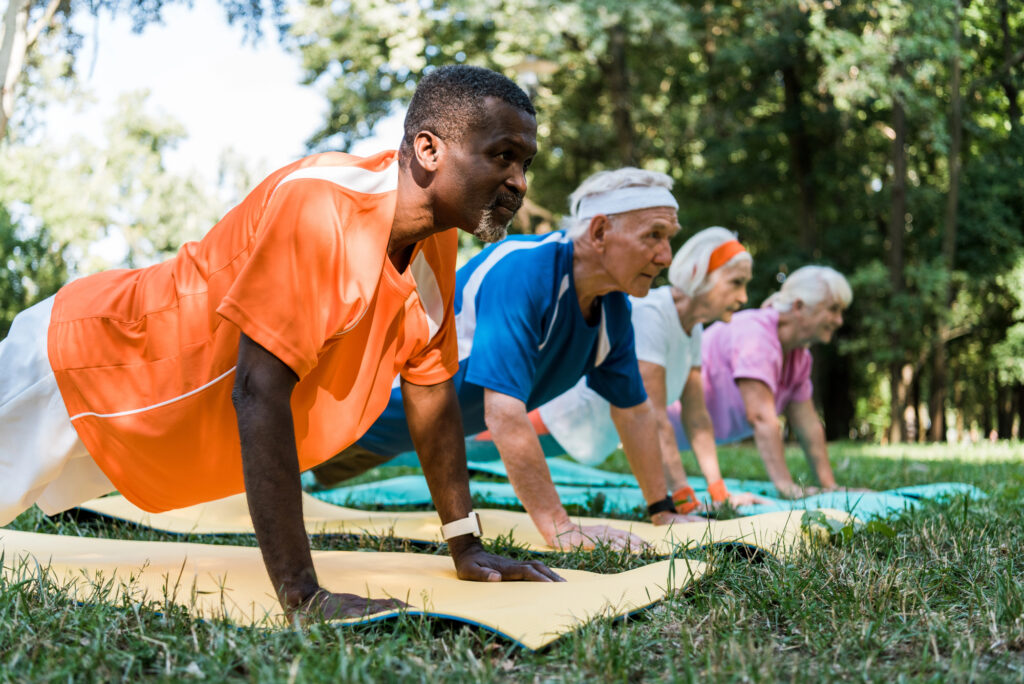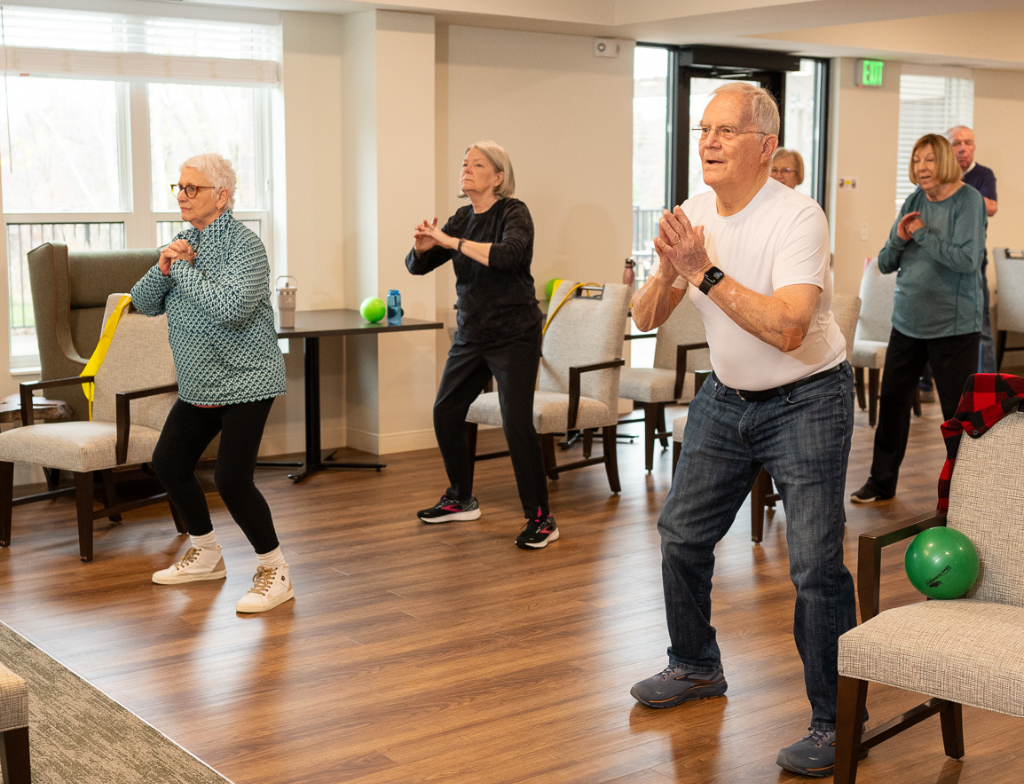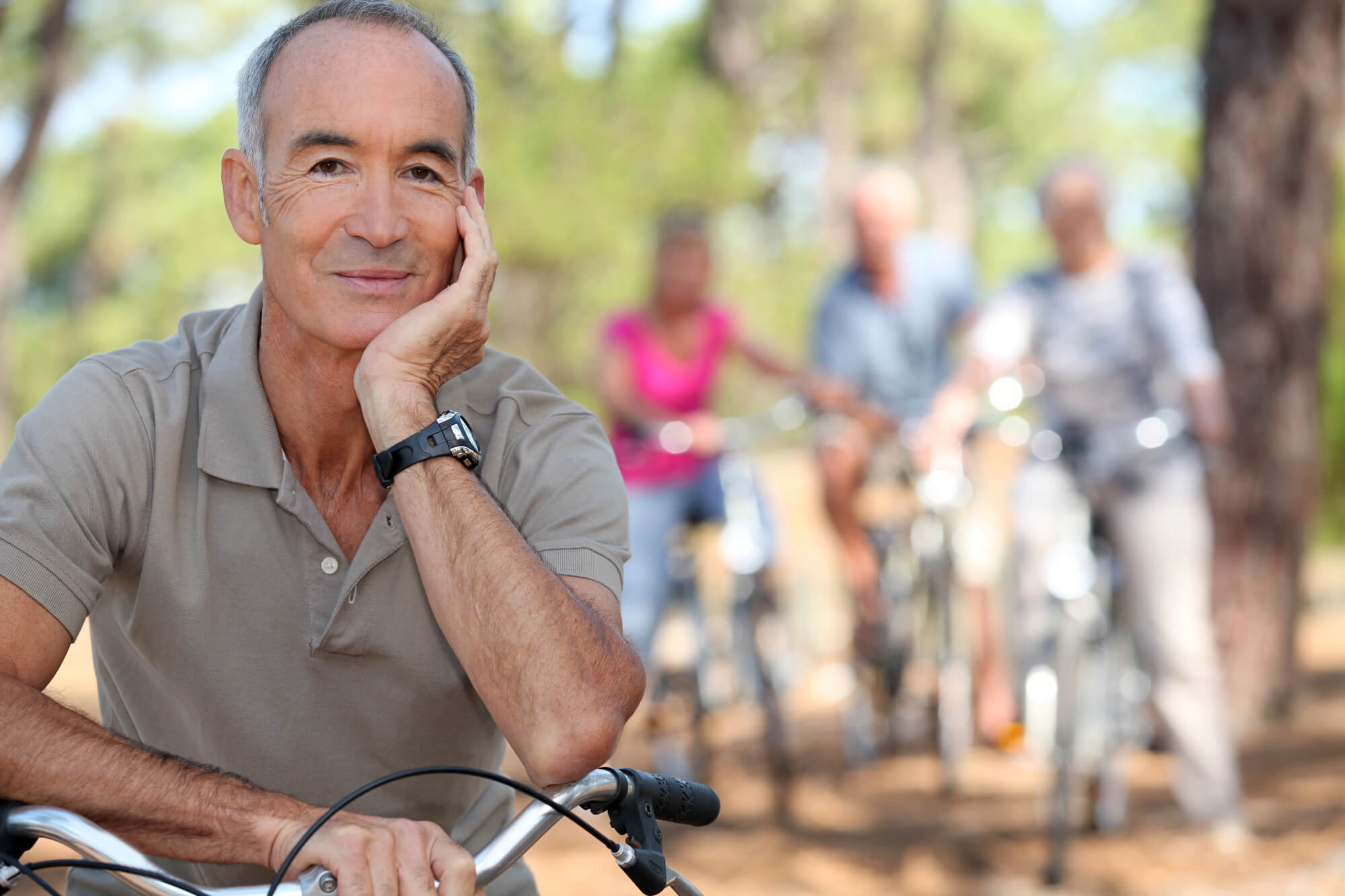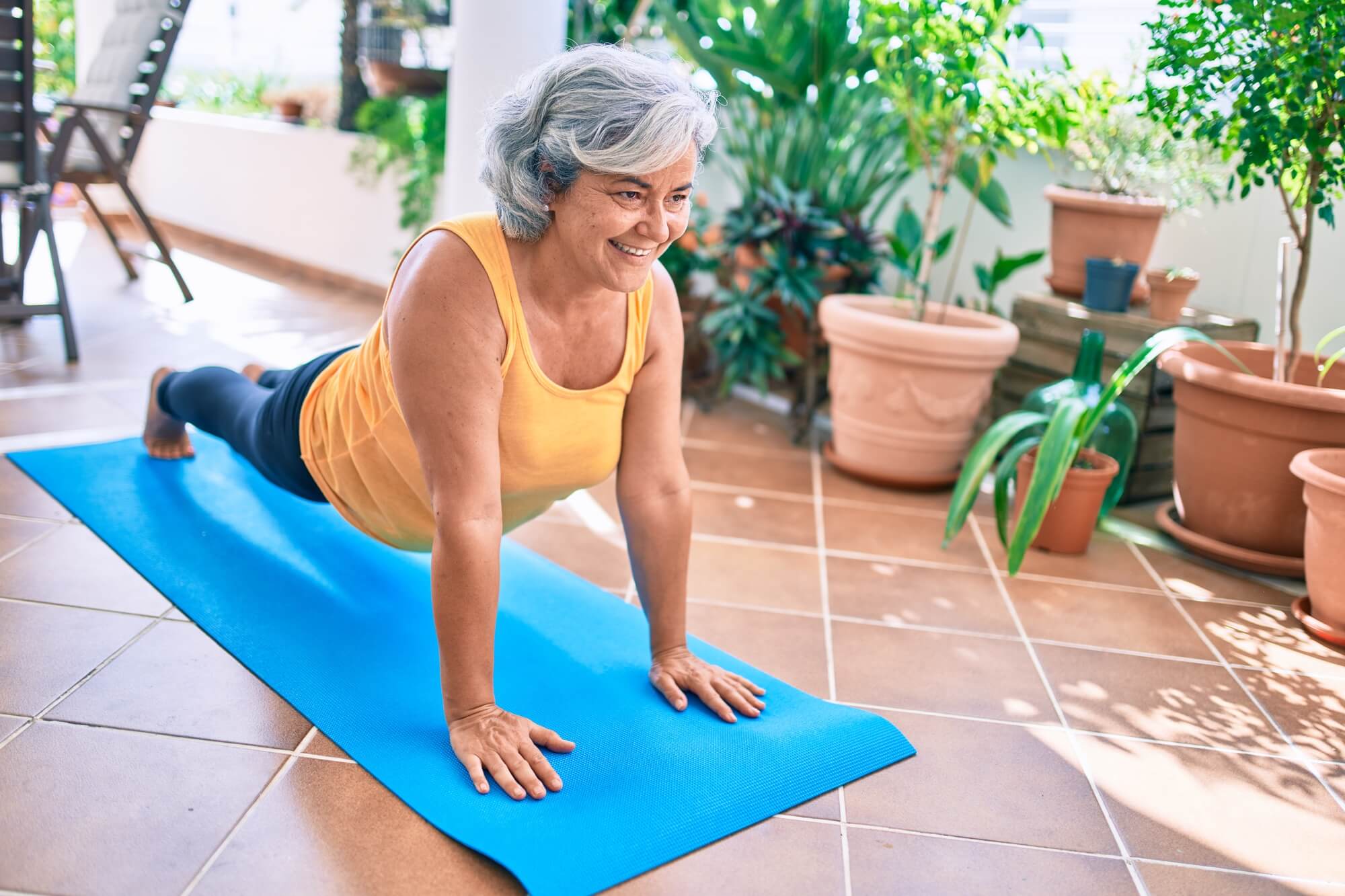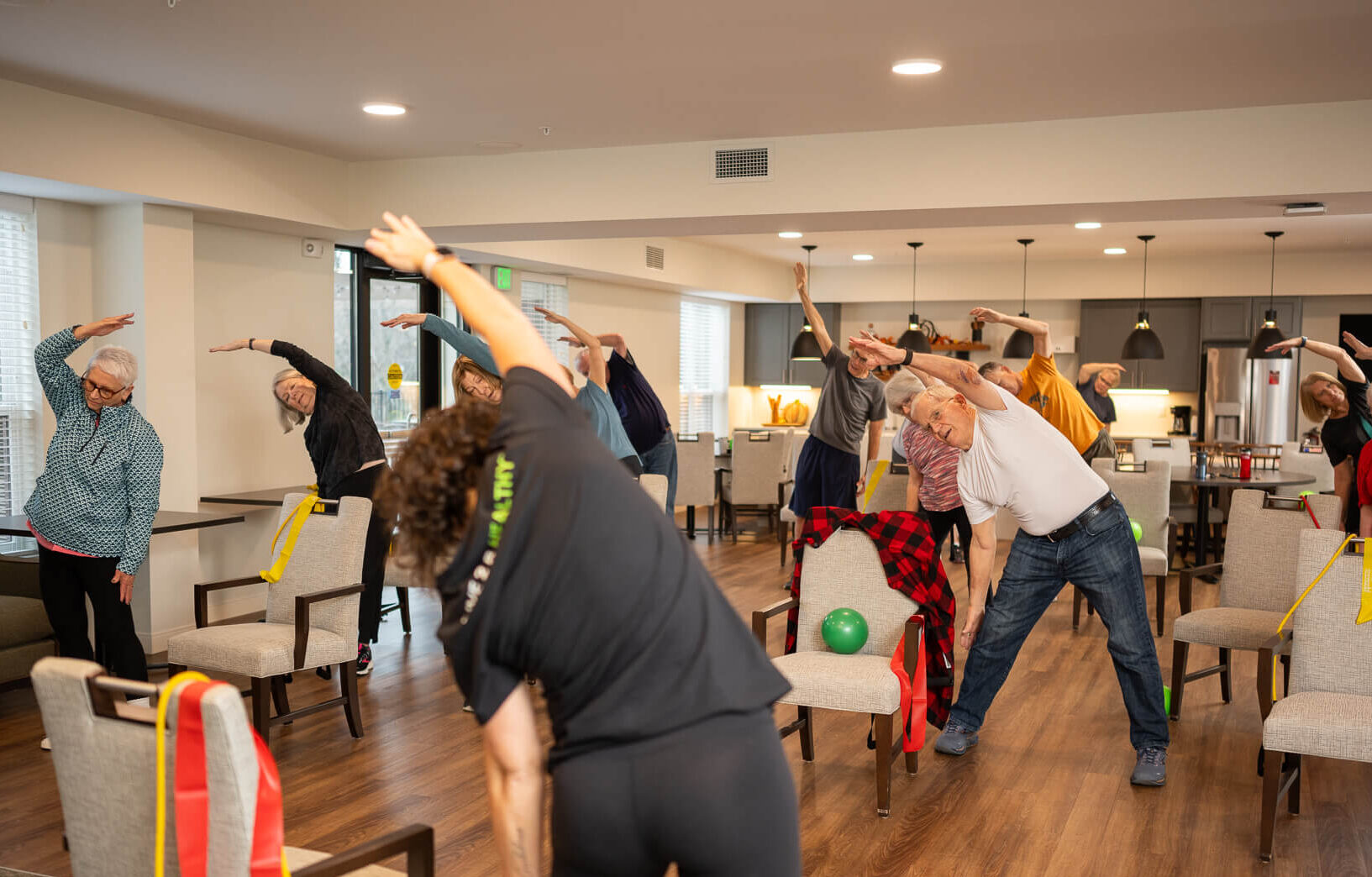Type 2 diabetes has been an increasingly prevalent disease among elderly populations in senior communities over the last few decades, with too many senior living communities offering little in the way of treating the disease outside of ensuring patients have their glucose lowering medications on hand and take it.
But, have you ever wondered how a simple routine of movement could empower seniors to take charge of their health, particularly when it comes to preventing type 2 diabetes?
As the population ages, the prevalence of chronic diseases like type 2 diabetes continues to rise, impacting not just individual health but the fabric of senior communities as well. The stakes are high: diabetes can lead to a number of complications that diminish the quality of life, but the good news is that exercise can play a pivotal role in prevention.
Incorporating regular physical activity into the lives of seniors not only helps prevent the onset of type 2 diabetes but also fosters a vibrant and supportive community environment. Exercise promotes social interaction, mental well-being, and improved physical health, creating a ripple effect that can extend well beyond the gym.
Join us as we explore the vital connection between exercise and diabetes prevention in seniors and discover how fostering an active lifestyle can transform senior communities for the better, and then check out our next blog post were we detail some of the best exercises Live 2 B Healthy’s fitness programs offers for seniors working to prevent diabetes or already managing it.
What Type 2 Diabetes Actually Is
Type 2 diabetes, a form of diabetes mellitus, is a chronic condition that affects the way the body regulates and uses sugar (glucose) as fuel. Glucose is essential to our health because it’s the primary source of energy for our body’s cells. However, for glucose to enter cells, it requires the help of a hormone called insulin, produced by the pancreas.
In people with type 2 diabetes, the body becomes resistant to insulin, or the pancreas doesn’t produce enough insulin to maintain normal glucose levels. As a result, glucose builds up in the bloodstream instead of being used for energy, leading to high blood sugar levels. Over time, this can cause serious health issues, including heart disease, nerve damage, kidney disease, and eye problems.
Causes and Risk Factors for Type 2 Diabetes
While the exact cause of type 2 diabetes is still not fully understood, several factors are known to increase the risk of developing it:
- Age: Risk increases with age, especially after age 45, which is why so many seniors in living communities suffer from it.
- Weight: Being overweight or obese is a major risk factor because excess fat can increase the body’s resistance to insulin.
- Family History: A family history of diabetes can raise the likelihood of developing the condition.
- Sedentary Lifestyle: Sedentary behavior or a lack of physical activity makes it more difficult for the body to manage blood sugar effectively.
- Other Health Conditions: High blood pressure and abnormal cholesterol levels are also linked to type 2 diabetes.
Symptoms of Type 2 Diabetes
The symptoms seen in individuals with type 2 diabetes can develop gradually and may be subtle, especially in the early stages. Common symptoms include:
- Frequent urination
- Increased thirst
- Unexplained weight loss
- Fatigue
- Blurred vision
- Slow-healing sores or frequent infections
For seniors, these symptoms can sometimes overlap with signs of aging, so regular check-ups are essential for early detection.
How Exercise Helps Fight Type 2 Diabetes
For caregivers at senior living communities, implementing tailored exercise programs can be a pivotal step in managing and potentially mitigating Type 2 diabetes complications and offering other longer-term health benefits to elderly residents.
According to the American Diabetes Association, either light or moderate intensity physical activity a few minutes per week plays an essential role in managing and preventing Type 2 diabetes among seniors by influencing various physiological processes:
Lowers Blood Sugar Levels
Engaging in regular physical activity is a proven strategy for reducing blood glucose levels (sugar levels,) thereby aiding in the management of Type 2 diabetes among seniors.
Regular exercise is a key tool for glycemic control, meaning it facilitates the effective utilization of glucose by cells, consequently leading to lower blood sugar levels. This reduction is essential for seniors with diabetes, as consistently high blood sugar levels can lead to severe health complications.
Helps Improve Insulin Sensitivity
Exercise greatly enhances insulin sensitivity among seniors with Type 2 diabetes.
This improvement in insulin sensitivity is essential because it helps the body use glucose more effectively, reducing the burden on the pancreas to produce insulin.
Regular exercise, such as aerobic activities, strength and resistance training, and flexibility exercises, can considerably modify how the body responds to insulin.
Lowers Cardiovascular Risk Factors
Several hours of physical activity per week, like brisk walking or water aerobic exercises, strengthens the heart muscle, improves circulation, and helps reduce blood pressure, and overall reduces their risk of cardiovascular diseases.
Additionally, maintaining ideal blood pressure is another essential aspect of managing Type 2 diabetes in seniors.
This reduction is critical for elderly people with type 2 diabetes, as high blood pressure can exacerbate the complications associated with this disease, not to mention pose a risk for their overall heart health.
Lower LDL Cholesterol Levels
On top of improving cardiovascular health, regular minutes per week of exercise helps to reduce LDL cholesterol levels., It is another benefit of exercise for people with Type 2 diabetes, particularly in the senior population.
Regular physical activity, especially aerobic exercises like walking, swimming, or cycling, has been shown to reduce levels of LDL cholesterol and triglycerides (another harmful fat in the blood). At the same time, it increases levels of HDL cholesterol, which helps remove LDL cholesterol from the bloodstream.
Improve Memory
Regular exercise not only enhances physical health but also plays an essential role in improving cognitive function, particularly in seniors managing diabetes. Engaging in consistent physical activities can greatly boost mental health and memory retention.
This improvement is imperative for seniors, as maintaining an active mind is as important as a healthy body. Fitness programs tailored to seniors, such as those offered as a daily routine by Live 2 B Healthy, encourage regular movement and cognitive engagement, which can ward off the cognitive decline often associated with aging and diabetes.
These activities, specifically designed to be safe and effective, support overall well-being, ensuring that each individual can enjoy a fuller, more connected life in their community.
Improve Muscle Strength
Physical strength plays an essential role in the management of Type 2 diabetes, particularly for seniors. Engaging in regular strength training and aerobic and resistance exercises can considerably help enhance muscle mass and improve glucose uptake from the blood.
Stronger muscles use glucose more efficiently, reducing blood sugar levels naturally. This process is crucial as it helps to stabilize blood sugar levels, preventing spikes that are common in diabetic conditions.
Other Benefits of Exercise in Seniors
Aside from aiding both senior people with pre-diabetes or with diabetes risks, exercise has a wide array of positive health outcomes for residents of these living communities, which includes:
- Improved Sleep Quality: Physical activity, from light or moderate exercise to high-intensity exercise, helps regulate the body’s natural sleep-wake cycle. In turn, better sleep can improve blood sugar control, reduce stress, and boost overall energy levels.
- Improved Mood: On top of physiological health benefits, there are mental health benefits as well. More than a hundred minutes of exercise per week has proven to stimulate the release of endorphins and other “feel-good” chemicals, and it also improves blood flow to the brain. This can reduce symptoms of depression and anxiety that comes from sedentary behavior in seniors and people with chronic diseases (precisely like diabetes or insulin resistance.)
- Reduce Fall Risk: Balance exercises, like tai chi or simple balance drills, strengthen stabilizing muscles. Reducing the risk of falls is crucial for seniors, as falls can lead to serious injuries and hospitalization.
- Reduced Inflammation: A regular exercise regimen of several times per week has been shown to reduce markers of inflammation in the body, which is often elevated in diabetes. Lowering inflammation decreases the risk of complications such as cardiovascular disease and may also alleviate joint pain.
- Enhanced Lung Capacity and Respiratory Health: Cardiovascular and resistance exercises increase lung capacity and improve oxygen efficiency. After several sessions of aerobic training, for example, patients with type 2 diabetes or without can expect improved lung function can enhance endurance, making activities of daily life less tiring.
- Improved Body Weight: Any type of effective exercise, from light walking to swimming, helps burn calories and increases metabolic rate, which can lead to weight loss or prevent weight gain. Weight loss improves insulin sensitivity and helps lower blood sugar levels, making diabetes management easier.
Live 2 B Healthy Senior Fitness Programs Helps Communities in Diabetes Prevention
The importance of fitness and exercise programs for elderly adults with Type 2 diabetes cannot be overstated. Increased physical activity levels play a vital role in enhancing insulin sensitivity, lowering cardiovascular risk factors, improving cholesterol levels, boosting cognitive function, and strengthening muscles. These benefits are particularly essential for seniors, who often face unique health challenges associated with aging and chronic conditions like diabetes.
Live 2 B Healthy’s senior fitness programs are specifically designed to address these needs by providing safe and effective activities that promote overall well-being for seniors of any fitness level and body composition who are at risk of diabetes or have been diagnosed with it.
By engaging seniors in tailored exercise plans that focus on aerobic training, balance training, strength training, and flexibility routines, Live 2 B Healthy empowers individuals and healthcare providers charged with their well-being to take control of their health while fostering a sense of community and connection.
These exercise routines not only help prevent the onset of diabetes but also support those already managing the condition by promoting healthier lifestyles and improved quality of life.
With the right guidance and resources from Live 2 B Healthy, senior living communities can create an environment where residents thrive through active participation in fitness initiatives—ultimately leading to better health outcomes and futures for all involved.


